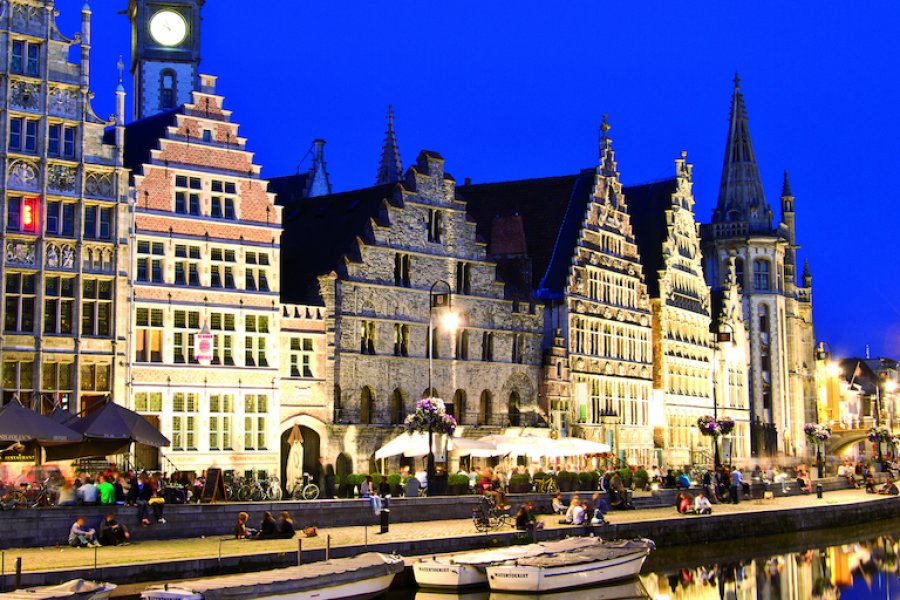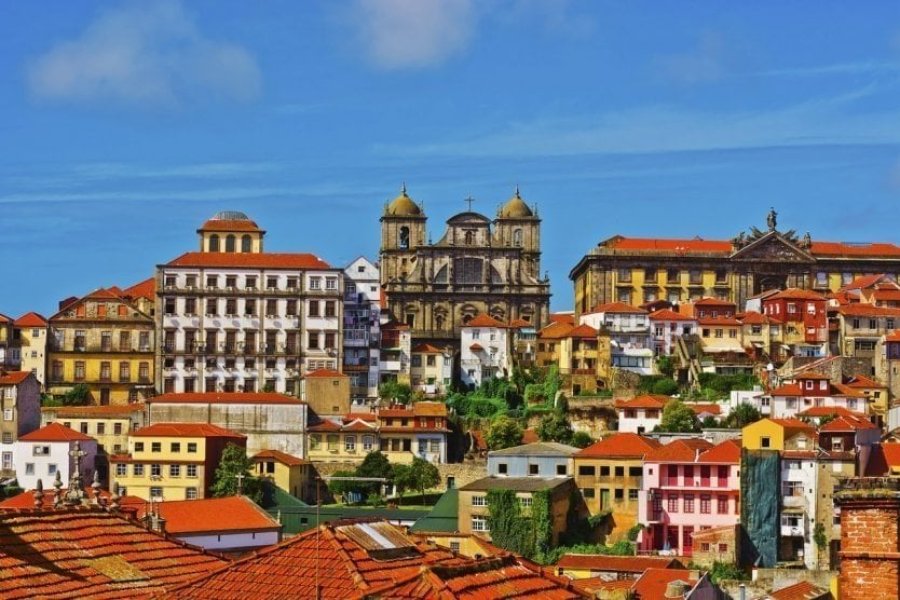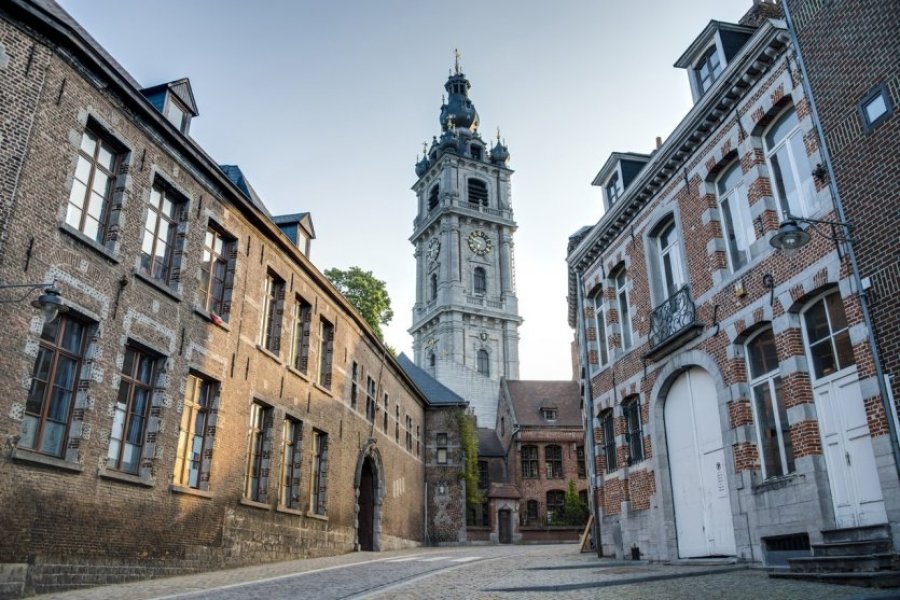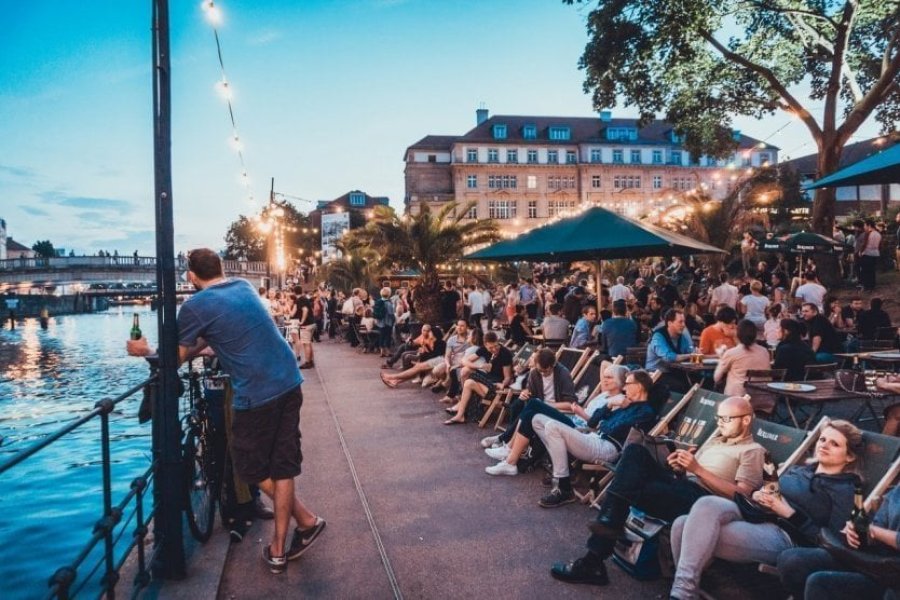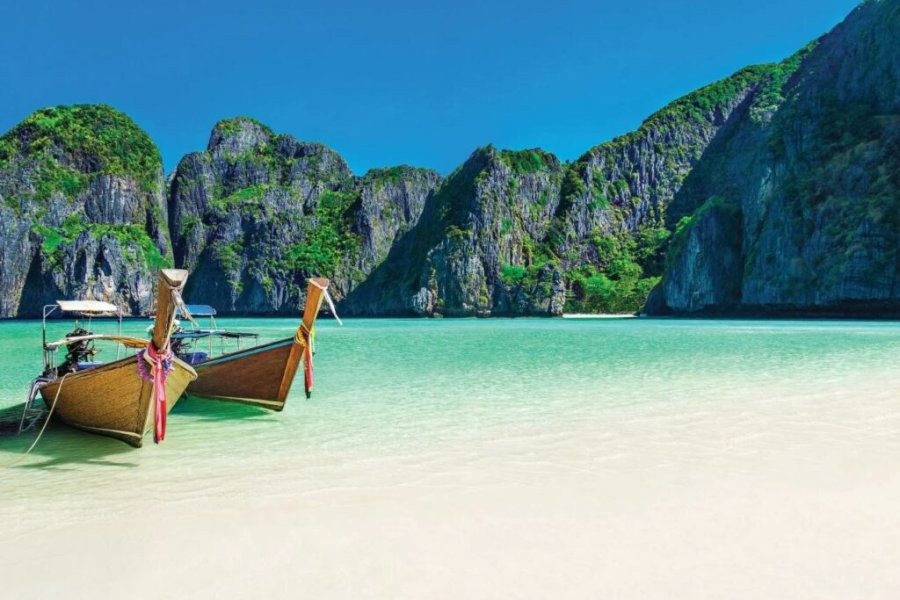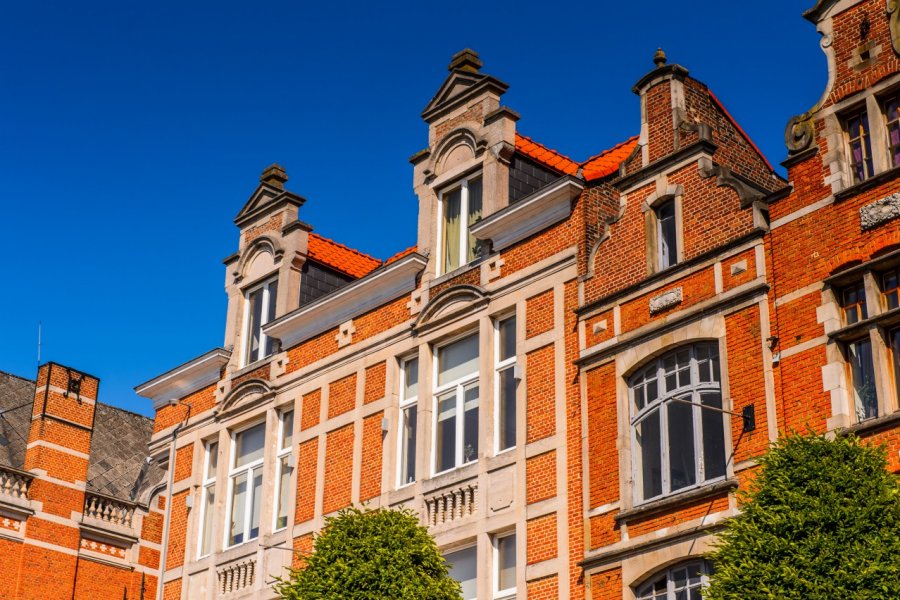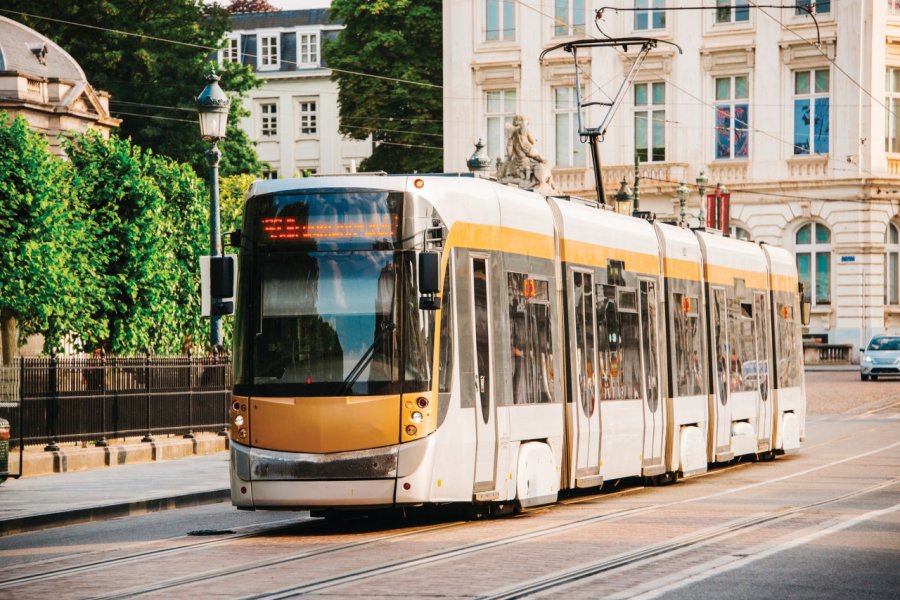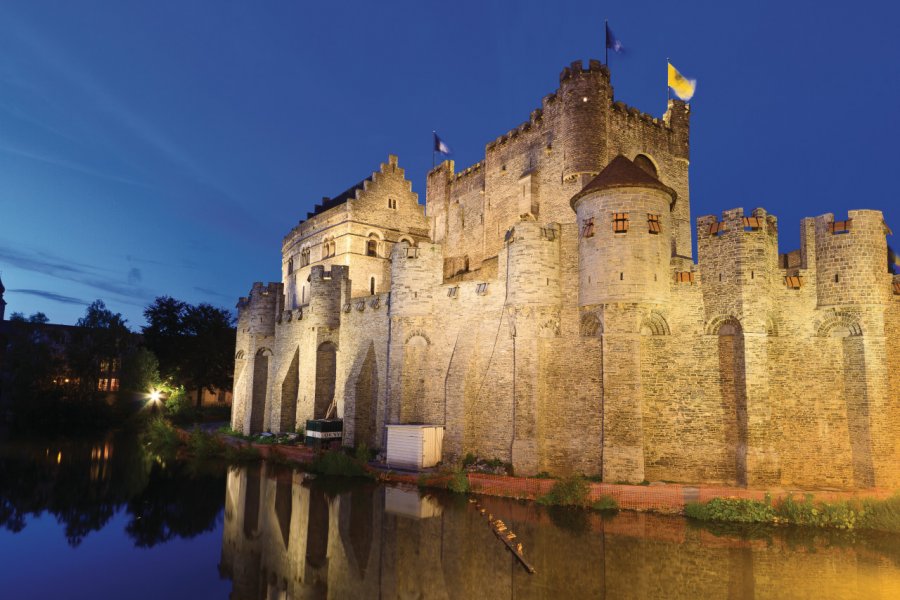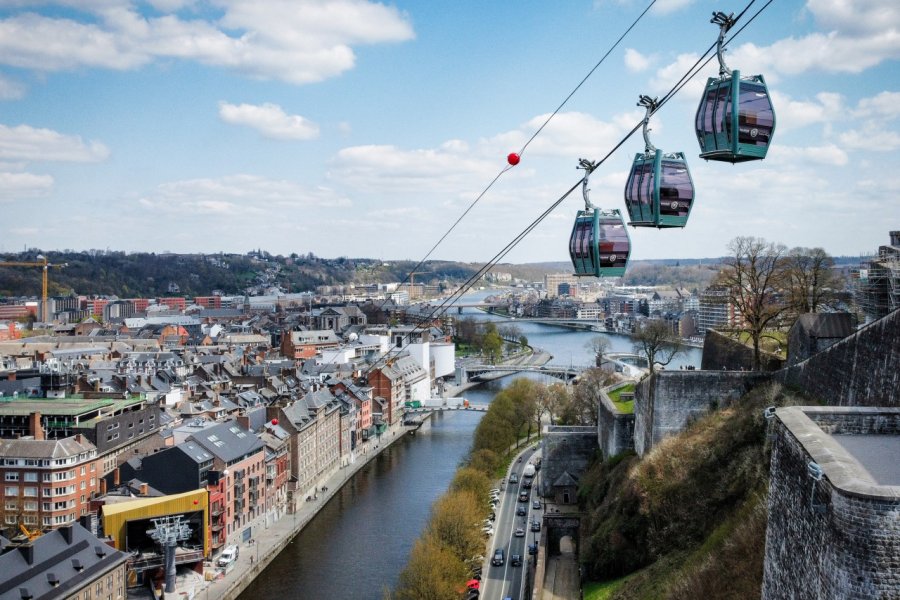Travel guide Belgium
Belgium is a land of good cultural, artistic, architectural and gustatory surprises, which a tourist guide to Belgium will try to show. On the shores of the North Sea, we discover the coastline and its memories of the Belle Époque, which transport us through the sweetness of Paul Delvaux's paintings after tasting a grilled sole. Then, we descend to Bruges the Legendary by forking through the Westhoek Natural Park and the cultural and natural sites marked by the First World War. Then it is Ghent and its architectural jewels, its medieval canals, a castle on the water... Before leaving Flanders, it is of course necessary to make a detour to Antwerp and its own identity. Limburg and its mining past will also attract curious visitors to the heart of the mines and Flemish Brabant will seduce beer and brewery lovers. And now Brussels is already showing its snout! Surrealism, Art Nouveau, temple of the comic strip, capital of Europe. Finally, more discreet in its communication but without having less to offer, Wallonia is undoubtedly worth a long visit. Waterloo and its lion's hill, Binche and its world-famous carnival, Namur and its citadel with its great paces, Dinant and its elegant rock... And how not to mention Liège, the ŽCité ArdenteŽ which houses in its heart offbeat artists, divine waffles. Finally, Bastogne and its commemorative sites on the Second World War thrill the Ardennes. Wherever you are in Belgium, the Kingdom promises a holiday without fuss.
What to see, what to do Belgium?
-
Book an activity
-
Customized travel
- The most beautiful cities Belgium
When to go Belgium ?
The best time to travel to Belgium is between June and September, when temperatures become more pleasant and rains less frequent. February, for carnivals, and December, for Christmas markets, can also be the subject of a few days getaway. Belgium means folklore and tradition. Be sure to check the dates of the festivities in the cities you are visiting. Some parades sometimes cause heavy traffic jams in transport, such as during carnivals. As a worthy European capital: it is preferable to avoid the car to travel around Brussels on European summit days in particular.
Suggested addresses Belgium
Travel Belgium
-
Find a hotel
-
Car Rental
-
International e-SIM package
-
Find a local agency
If you only have a weekend to discover Belgium, choose to visit a city and its surroundings rather than touring the country as quickly as possible. Belgium is a slow country to visit, and you'll have to pick up the pace. Bruges or Brussels are the most common choices but never disappointing. In Bruges, avoid the high season at all costs, so you can enjoy a warmer and more welcoming city. Antwerp and Ghent have an undeniable urban dynamism, while Namur and Liège have a more popular, festive character. Two weeks is a reasonable amount of time to get a good overview of Belgium, its major cities and its hinterland. Jacques Brel's "Plat Pays" may be a small territory, but there are many points of interest. An alternative to the traditional (and very touristy) Brussels-Bruges route is to do Brussels - Kortrijk - Ghent - Antwerp.
Find unique holiday offers with our partners
How to go Belgium
How to go alone
It is very easy to go alone in Belgium, the road, rail and air transport networks being very developed and the means to get there are legion (plane, train, bus, car...). However, beware of pickpockets in tourist areas and large cities. Remember to book well in advance during the high season.
How to go on a tour
The offer is diverse and varied to discover Belgium. Discovery of the Belgian countryside, city escapades in Brussels, Bruges or Ghent, romantic and cultural stays, tour on Flemish painters: the possibilities are numerous. The destination lends itself to several types of stay. Given the variety of offers, prices are adapted to small budgets, but also to those who are looking for a charming stay.
How to get around
As far as air travel is concerned, the distances are so short in Belgium that this mode of transport is not suitable. But apart from air travel, the main means of transport are easily accessible: train, bus, car and bicycle. In the big cities, the transport network is so developed that the car is not of much interest.
Featured articles Belgium
Discover Belgium
It is the most western province of Belgium, at the very end of the country like the bow of a ship. The 67 km of beach take "the North Sea as the last wasteland and waves of dunes to stop the waves". The province is also characterised by its topography: unchangingly flat "with cathedrals as the only mountains and black bell towers as masts of cocagne". That's enough for Brel, we'll leave it to you to sing along as you cross the flat country. Bruges, the romantic city, is the "Venice of the North", the most touristic city in Belgium. But you can also linger in Ostend and all the coastal resorts in the summer, as well as in the Westhoek, a battleground during the First World War with a wealth of memorials.
Pictures and images Belgium
The 12 keywords Belgium
1. #ART NEW
Very popular in the early 20th century, Art Nouveau was inspired by natural forms and structures: flowers and plants, but also their curves, and favored materials such as glass and steel in the midst of the industrial revolution. Belgium is home to many Art Nouveau houses and buildings, many by the master Victor Horta.
2. #COMICS

Belgium has almost 700 comic strip authors. Hergé opened the ball with Tintin and Snowy in 1929. Morris imagined Lucky Luke in 1946. André Franquin drew Spirou in 1947, Marsupilami in 1952, and Gaston Lagaffe in 1957. Peyo designed the Smurfs in 1954. And Jean Roba's Boule et Bill in 1959 was a precursor to modern comics.
3. #BEFFROIS
The Belgian belfries, listed by Unesco, are towers supporting bells that punctuated the economic and social life of cities in the Middle Ages (working hours, lunch break, tocsin, festivals ...). The belfry was also a watchtower in front of potential dangers and represented the independence acquired by the cities in front of the feudal regime.
4. #BEGUINAGES
Beguinages date back to the Middle Ages and are listed by UNESCO. Single women came together to help each other, without taking vows. However, they lived devoutly and carried out social and medical work. Each beguinage included a dispensary, manufacturing workshops, a church and modest-sized houses.
5. #CANAL
The gradual reclamation of the land from the 11th century onwards pushed the sea further and further away and dug canals for irrigation and water drainage, which were very convenient for transporting goods to the centre. These can be found in Bruges, but also in Ghent and in the Belgian countryside linking the cities together.
6. #DENTELLE

Since the 16th century, Belgium has been renowned for the quality of its lace-making crafts. The work is divided between two production centers: Brussels, which specializes in bobbin lace with cut threads, and Bruges, which is the capital of the fairy stitch from Binche and of bobbin lace with continuous threads.
7. #RED DEVILS
Whether you like soccer or not, you have to admit that it has one quality: it brings Belgians together around the same fervor, the same passion. Belgium has seen some fine generations (notably in 1986 and 2014), but has never managed to win a major trophy. The Red Devils are still a team to be feared!
8. #EUROPE
Brussels is home to the European Commission and the European Parliament. What's more, Belgium is fortunate to be at the crossroads of Latin and Northern European cultures. As a result, its richness is unparalleled: Belgians are very open-minded culturally, and speak English and German in addition to French and Dutch.
9. #NORTH SEA

A little cold, perhaps, but full of charm, with its tides, breakwaters, iodized air and vast sandy beaches. The Belgian coastline, with almost 70 kilometers of coastline, is part of the Belgian childhood, with its sand castles decorated with paper flowers and mica windmills, and its pedal-powered "cuistax" rides.
10. #FLEMISH PAINTING
With the technique of glazing, this oil painting allows a luminosity, a transparency and nuances unseen in Europe. It depicts the religious, the daily life of the inhabitants. The Mystic Lamb by the Van Eyck brothers in 1432 was the foundation of the primitive movement, embodied by Memling, Van der Goes and Bosch. Brueghel the Elder and Rubens followed in the Renaissance.
11. #PLAT COUNTRY

"With cathedrals for only mountains / And black steeples as masts of cocagne..." Brel sang so well the Plat Pays. If Belgium deserves this reputation for its western part (the seaside and its hinterland), on the other hand, Wallonia is much more hilly, especially going down to the Ardennes, in the southeast of the country.
12. #VÉLOS
This means of transport is very popular throughout the country, whether you're going to school, to work, to the disco... You'll be surprised by the number of facilities available for cyclists (cycle paths, ramps, bike parks, etc.). Just be careful if you're driving or walking: they're the kings of the road!
You are from here, if...
You say the "x" in Bruxelles "ss", like the "x" in Auxerre, including in the adjective "bruxellois". The "x" in Bruxelles derives from the Latin name Bruxellae, whereas the city's original name is Brussel in Dutch. You also pronounce the "s" in Antwerp, otherwise nobody understands.
You order beer "on tap", not "on draught". What's more, you don't order the cheapest "pils" on sale, but a beer of character from among the triples, IPAs, browns, blondes, ambers and so on.
You ride your bike day and night, rain or shine. You may even have learned to ride before you learned to walk! You know how to find your bike in a parking lot with a thousand two-wheelers on top of each other. You use bike ramps on stairs.
You never refuse to attend a carnival or a ducasse. Folklore and festivities with family and friends are essential to you and reinforce the identity of your region.

